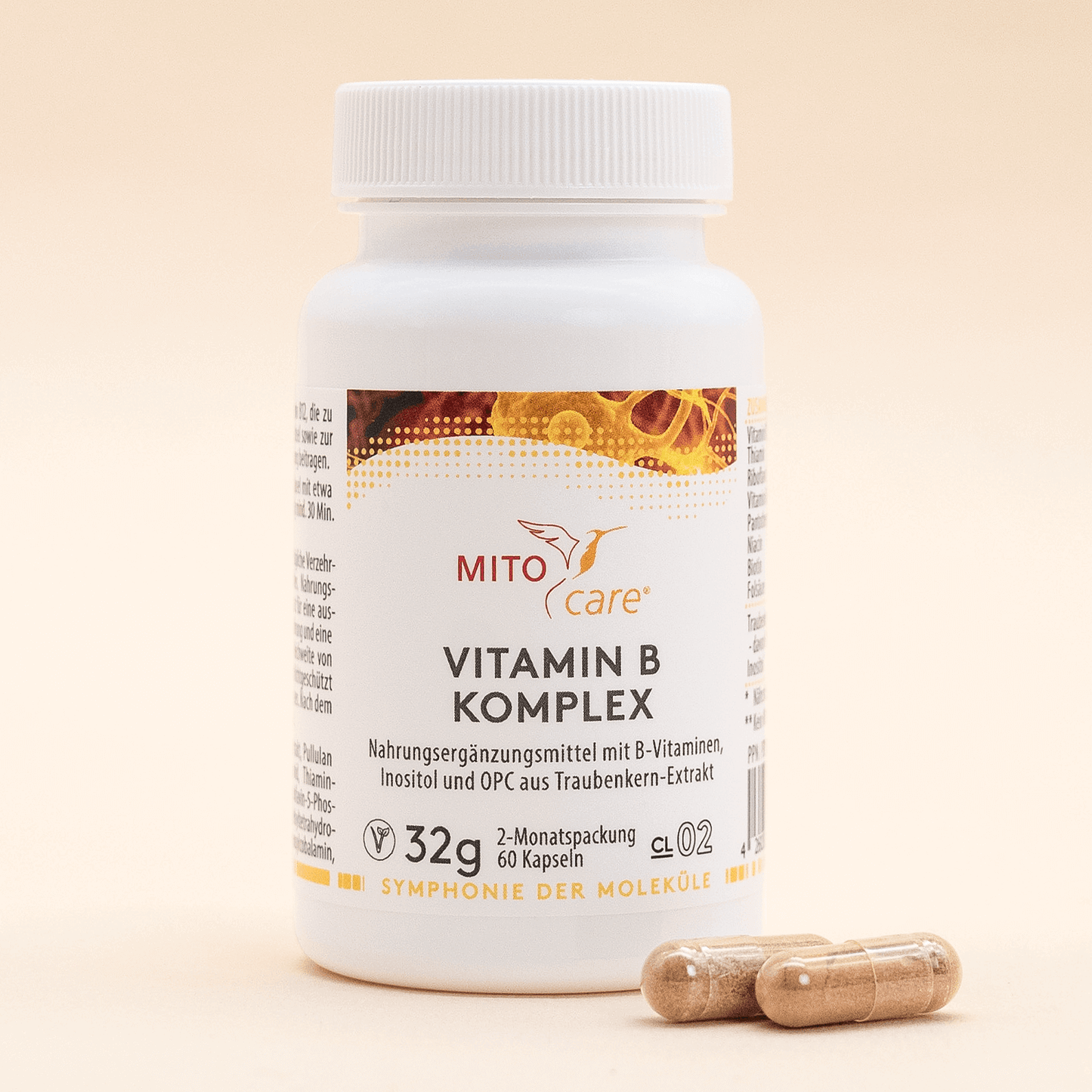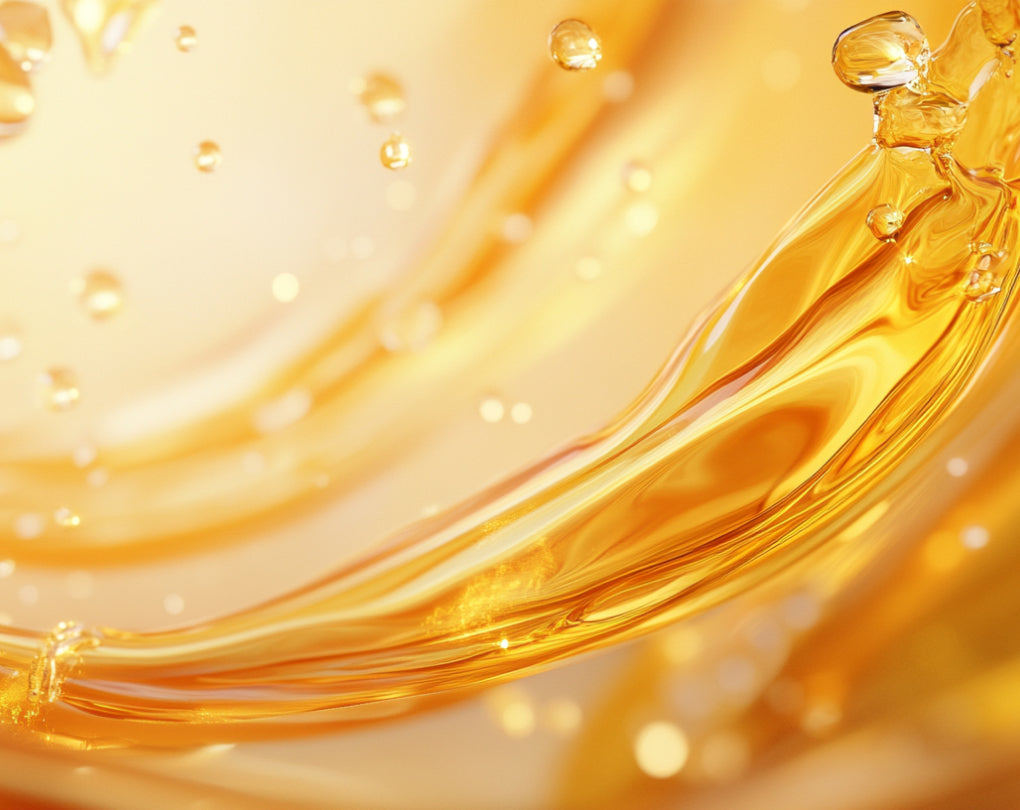Themen dieses Blogartikels:
Table of contents
- Definition: Homocysteine – what is it?
- What functions does homocysteine have?
- Increased risk of cardiovascular disease
- What makes homocysteine unique?
- How does an excess of homocysteine arise?
- Possible cause: B vitamin deficiency
- The important role of vitamin B6, vitamin B12 and folic acid
- What symptoms does an elevated homocysteine level cause?
- What to do if homocysteine is elevated?
- Bibliography & Sources
Definition: Homocysteine – what is it?
Homocysteine (Hcy), also known as L-homocysteine, is a sulfur-containing amino acid. It is a metabolic intermediate and is formed during the breakdown of methionine to cysteine.¹Good to know: Methionine is an essential proteinogenic amino acid, meaning it is vital and important for protein synthesis. Cysteine, a sulfur-containing amino acid, is a component of proteins.
Normally, the metabolite homocysteine is rapidly broken down to cysteine or remethylated, i.e., "converted back" to its starting material, methionine.² This is because homocysteine, as an intermediate product of one-carbon transfer, is a potent cytotoxin that circulates in the blood in free and bound form.³ If the serum homocysteine level is elevated, this potentially toxic substance can cause damage to the vascular walls and increase the tendency to thrombosis.⁴
What functions does homocysteine have?
Homocysteine is not found in our food. This sulfur-containing amino acid is formed when methionine is metabolized by demethylation—the removal of methyl groups. The task of the metabolite homocysteine is to transfer these methyl groups so that essential amino acids can be formed.⁵
Increased risk of cardiovascular disease
Once this important function is fulfilled, the intermediate Hcy is broken down by the body. If this is not achieved sufficiently, it leads to elevated serum homocysteine levels.⁶ If the concentration of homocysteine in the blood exceeds 15 µmol/L, this is referred to as homocysteinemia or hyperhomocysteinemia. This increases the risk of developing cardiovascular diseases, i.e., diseases affecting the heart and vascular system, such as arteriosclerosis, also known as hardening of the arteries, or thrombosis.⁷
What makes homocysteine unique?
The form L-homocysteine is a naturally occurring, non-proteinogenic α-amino acid produced during the breakdown of methionine. In healthy people, this toxic substance is immediately metabolized. Therefore, it is usually present in only small amounts in the body.⁸ In cases of homocysteinemia, a disorder of homocysteine metabolism, this conversion does not function properly. The result: elevated homocysteine levels, which can lead to health problems.
Elevated homocysteine levels have been shown to damage blood vessels, increasing the risk of arterial and venous thrombosis. ⁹ Elevated homocysteine levels also increase the risk of developing coronary heart disease (CHD) or stroke at a young age.¹⁰ A link between elevated homocysteine and various neurological and psychiatric disorders, including depression and dementia, has also been discussed.¹¹
Possible cause: B vitamin deficiency
However, one of the most common causes of homocysteinemia is a vitamin deficiency. The micronutrients vitamin B9 (folic acid) , vitamin B2 (riboflavin) , vitamin B6 (pyridoxine), and vitamin B12 (cobalamin) are involved as cofactors in the breakdown of the amino acid homocysteine.¹⁶ For doctors, a high homocysteine level in laboratory values is therefore an indication of a B-vitamin deficiency in the patient.
The important role of vitamin B6, vitamin B12 and folic acid
Increased homocysteine due to stress – is that possible? When you're stressed, your need for B vitamins increases. These nutrients play an important role in a functioning metabolism and stress management.¹⁷ If the body lacks vitamin B9, vitamin B2, vitamin B6, or vitamin B12 due to stress, this can lead to elevated homocysteine levels.
What symptoms does an elevated homocysteine level cause?
Homocysteinemia itself does not cause symptoms. However, it can promote certain medical complications and serious secondary diseases, such as pulmonary embolism, thrombosis, atherosclerosis or peripheral arterial occlusive disease (PAD), heart attack, or stroke. It can also lead to the development of macular degeneration (a disease of the central fundus of the eye), coronary heart disease, Alzheimer's disease, or dementia. It can lead to miscarriage in pregnant women and possibly a neural tube defect in the unborn child.¹⁸
Since homocysteinemia is often caused by a vitamin B deficiency, you should watch for early signs such as fatigue, weakness, dizziness, tingling, and confusion, and consult a doctor if in doubt. Keep in mind: The deficiency in these micronutrients increases particularly with age.¹⁹
What to do if homocysteine is elevated?
To lower homocysteine, doctors typically prescribe vitamins B6, B12, and folic acid.²⁰ In addition, those affected are advised to generally switch to a vitamin-rich diet. Vegetables such as beans and sauerkraut, nuts, whole grains, and dairy products contribute to an optimal supply of vitamins B6, B12, and folic acid. Adequate intake of vitamins B12 and co-vitamins is also recommended to prevent elevated homocysteine levels.²¹
This encyclopedia entry is based on carefully researched sources:
Bibliography & Sources
- ihp-labor.de/fachinformation/gerinnung/homocystein
- imd-berlin.de/fachinformation/diagnostikinformation/homocysteinaemie
- labor-duesseldorf.de/examination/view/homocystein
- chemie.de/lexikon/Homocystein.html
- labor-duesseldorf.de/examination/view/homocystein
- flexikon.doccheck.com/de/Homocysteine
- pschyrembel.de/Homocystein%C3%A4mie/K0A14
- gesundheits-lexikon.com/Ueberweight-Metabolic-Diabetes-mellitus/Hyperhomocysteinaemia/Introduction
- msdmanuals.com/de/profi/h%C3%A4matology-and-oncology/thrombotic-diseases/hyperhomocysteine%C3%A4mia
- flexikon.doccheck.com/de/Homocysteine
- thieme-connect.com/products/ejournals/abstract/10.1055/s-0044-101058
- flexikon.doccheck.com/de/Homocysteine
- gesundheit.gv.at/labor/laborwerte/blutgerinnung/homocystein.html
- dariusalamouti.de/schoenheitslexikon/h/hoher-homocysteinspiegel
- deutsche-apotheker-zeitung.de/daz-az/2001/daz-5-2001/uid-189
- ihp-labor.de/fachinformation/gerinnung/homocystein
- Schlosspark-klinik-dirmstein.de/burnout-und-b-vitamins/
- gesundheits-lexikon.com/Ueberweight-Metabolic-Diabetes-mellitus/Hyperhomocysteinaemia/Consequent diseases
- aerzteblatt.de/news/vitaminlack-jeder-vierte-im-alter-mit-vitamin-b12-unterversorge-7b3364a9-26a5-4d31-aba5-230ae776bc0f
- aerzteblatt.de/archiv/hyperhomocysteinaemie-vitaminsubstitution-wird-rempohlen-b45b8bb1-cd8a-41ae-be1f-7a414bcd3d03
- labor-duesseldorf.de/examination/view/homocystein


















